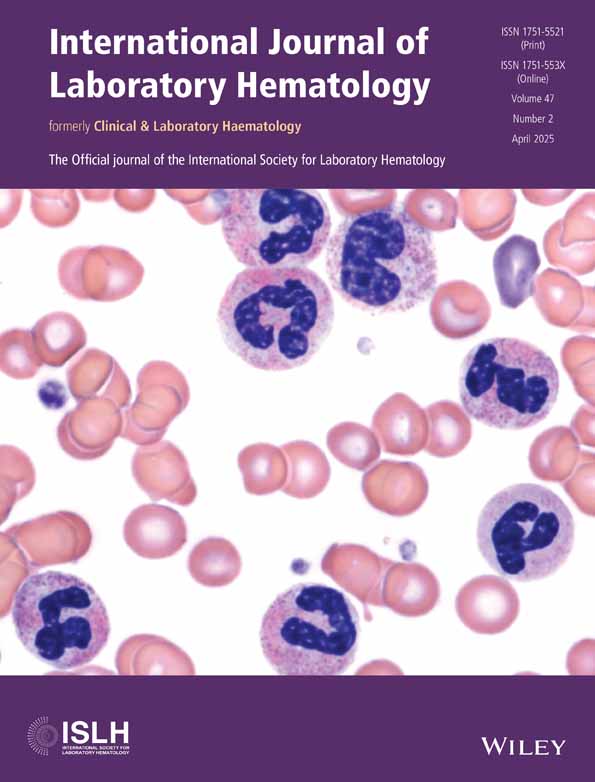Molecular Characterization of δβ Thalassemia/Hereditary Persistence of Fetal Hemoglobin and Its Correlation With Clinical and Hematological Profile; a Single Center Study in North India
Funding: This work was supported by ICMR F No, EMDR/SG/13/2023-4199.
ABSTRACT
Background
δβ-thalassemia/HPFH is an uncommon hemoglobinopathy characterized by decreased or the total absence of production of δ- and β-globin and increased HbF levels. Both these disorders have variable genotype and phenotype, but significant overlap in the clinical and laboratory findings. Given the lack of literature in this regard, the study aimed to estimate the prevalence of the disease and evaluate its clinical, hematological, and molecular profile in India.
Material and Methods
This was a retrospective study where all samples with HbF level ≥ 5% and suspected to be δβ-thalassemia/HPFH, based on the HPLC, were included in the study over 3.5 years. The demographic and clinical details were retrieved from the electronic medical records. Gap-PCR was carried out to characterize the molecular defect for the HbF determinant, while amplification refractory mutation system (ARMS—PCR) was carried out for β-thalassemia genoyping. Clinical and laboratory parameters of heterozygous and homozygous/compound heterozygous δβ thalassemia deletions were compared.
Results
A total of 65 individuals (0.8%) were diagnosed with δβ-thalassemia/HPFH; these included 45 (69%) patients in the heterozygous group and 20 (31%) cases in the homozygous/compound heterozygous subgroup. While all the carrier states were asymptomatic, 80% of the patients in the homozygous/compound heterozygous state were symptomatic with a thalassemia intermedia-like profile. The median Hb levels were 12.3 g/dL (range −9.5–18.2) and 8.0 g/dL (range 3.8–15.1) respectively. Molecular profiling identified heterozygous Asian Indian inversion deletion Gγ(Aγδβ)0 mutation in 50% of cases, heterozygous HPFH-3 (Indian HPFH, 48.5 kb deletion) in 14% cases, and homozygous Gγ(Aγδβ)0-thalassemia in 21% cases. Compound heterozygous HPFH-3/Gγ(Aγδβ)0 mutation with β-thalassemia was observed in 8.9% and 3.5%, respectively. In one case, the HbF determinant could not be identified. Heterozygous (HBB:c. 92+5G>C), was the most frequent co-inherited β-thalassemia mutation in the compound heterozygous patients.
Conclusion
The study highlights that high HbF determinants, like δβ thalassemia and HPFH, are relatively more frequent in the Indian subcontinent, and their co-inheritance with β-thalassemia results in a moderately severe disease. Accurate identification of molecular defects is important for prenatal diagnosis and genetic counseling.
Conflicts of Interest
The authors declare no conflicts of interest.
Open Research
Data Availability Statement
The data that support the findings of this study are available on request from the corresponding author. The data are not publicly available due to privacy or ethical restrictions.




